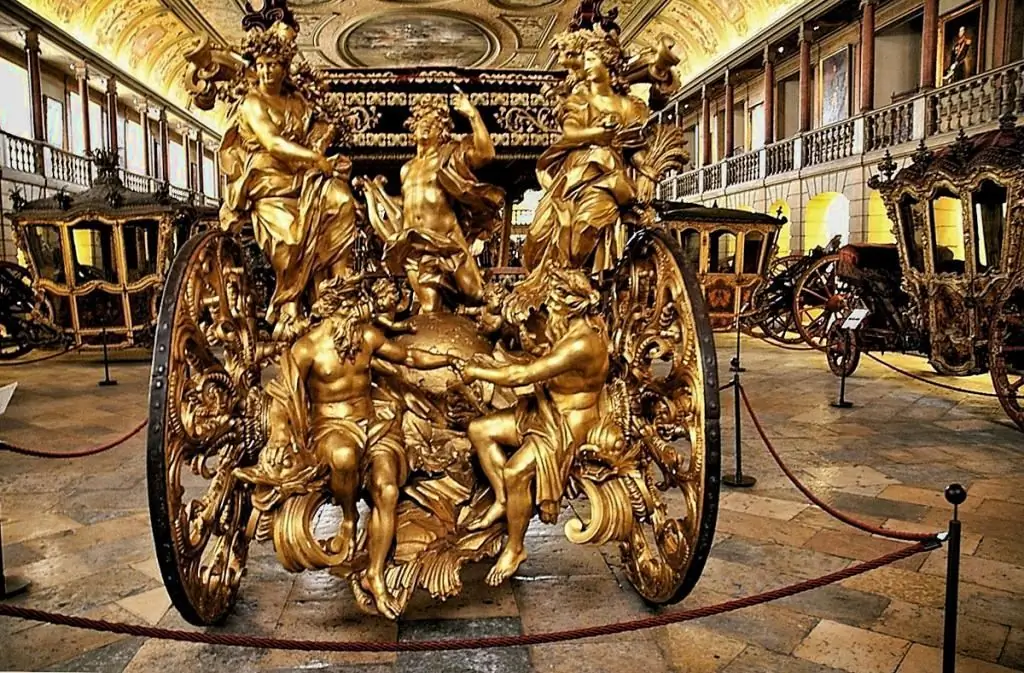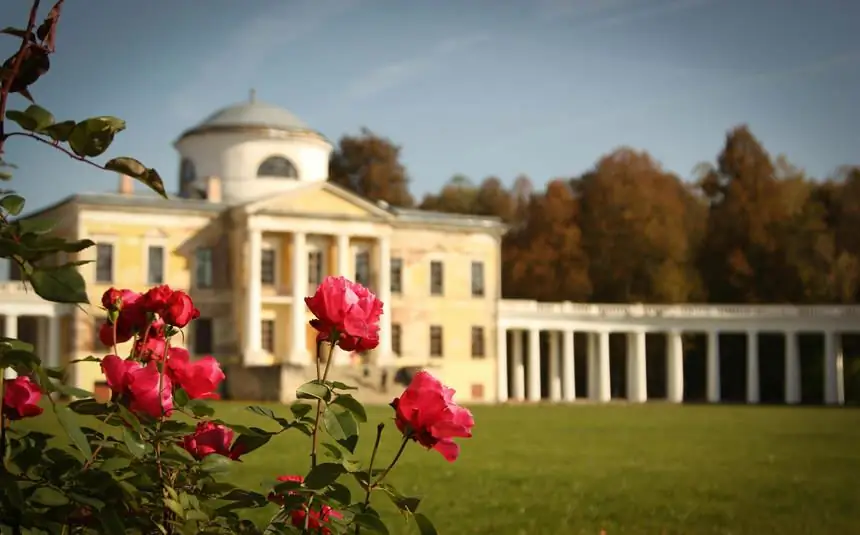- Author Harold Hamphrey [email protected].
- Public 2023-12-17 10:06.
- Last modified 2025-01-24 11:10.
Paris turned into the abode of culture and art with the light hand of the Sun King Louis the Fourteenth. The king loved the theater, patronized artists and took part in performances himself with pleasure. Several hundred years have passed, and the capital of France is still the center of culture.
What is opera
The word "opera" came to us from the Italian language and literally translates as "work, products, works." The conditional definition appeared much later, at the beginning of the nineteenth century. In our time, by the word "opera" we mean a type of musical work in which words, music and theatrical action are uniquely combined. Music plays a primary role here, unlike the theater, and all the action is based on the libretto. The libretto is built on the basis of a work of art.
History of the Grand Opera
One of the most popular and significant opera and ballet theaters in the world of art has been and remains the Grand Opera. However, this name is a bit outdated. Today this temple of art is calledThe Opéra Garnier, named after the architect Charles Garnier. The building is located in the ninth arrondissement of Paris, in the city center, on Opera street of the same name. Opera metro station is also located here.

It's impossible to just walk past the majestic opera in Paris. It was built in neo-baroque style back in 1875. The history of the appearance is connected with the personality of Napoleon III, who was so superstitious that after an unsuccessful assassination attempt on him next to the theater, Le Peletier decided to build a new temple of Melpomene, striking in its beauty, on this site. A nationwide competition for the best architectural sketch was announced. Hundreds of papers were viewed. Napoleon, being a fine connoisseur of theatrical art, chose the project of an unknown architect Charles Garnier. Napoleon was struck by the luxury and scope that the architect proposed to give to his masterpiece.

In 1860 construction began. The situation was slowed down by the unpleasant fact that the land at the chosen place turned out to be very swampy. It took about eight months to drain and clear the land. Construction has continued.
A river flows under the foundation. Garnier turned this fact to good. The waters of the river carry sand, closing small cracks, and in the event of a fire, this is an excellent reservoir of water.
Construction continued for fifteen years, even despite the unstable political situation at the time. The fall of the Paris Commune turned the temple of art under construction into a prison for some time. It was also carried out hereexecution of the conspirators. But by 1875, the construction was completed, and the townspeople saw the magnificent building of the opera - it had no equal in Paris.

Internal architecture
Since the end of the eighteenth century, the name of the theater has changed many times. It was the "Theater of Arts", "Theatre of the Republic and Arts", "Opera Theatre" and even the "Imperial Academy of Music" and the "Royal Academy of Music and Dance." The photos of the Grand Opera in Paris do not convey even half of the magnificence with which the building was saturated architect not only outside, but also inside. Finishing stones were brought from all over Europe and its colonies, including African ones. From stones, masons created magnificent statues that have survived to this day. The famous sculptors of that time worked day and night to create the most magnificent statues of the Greek gods, patrons of love, poetry, dance and music.
The building covers about ten thousand square meters. They quietly fit the stage, capable of simultaneously receiving more than 400 artists. There are 2,500 seats for spectators. Almost all decorative elements are decorated with gold leaf. According to the surviving historical documents, it is known that it took about six tons of gold to pour it with a generous hand on the plafonds, statues of cupids, Greek goddesses, to finish the mirrors and ceilings. In the center of the hall hangs a magnificent crystal chandelier, which can be seen even from the outside of the opera house in Paris. Now between the statues of the gods there are busts of the great composers of all eras: Beethoven, Strauss, Bach, Mozart,Rossini, and the ceilings are decorated with restored frescoes.

Tours
Excursions to the Opera Garnier in Paris are held daily for those who have not yet got a ticket to any performance, because getting them is not very easy. Everything is booked months in advance. And if you are passing through the capital of France, then the excursion is quite enough to enjoy the splendor of the opera in Paris. Tours run daily from 10:00 am to 5:00 pm. The ticket price is from five to ten euros, excluding the cost of the guide. His services are paid separately in the amount of 35 euros. After walking through the halls at the exit, you can buy a few trinkets as a memento of this magnificent palace.
Ballet School
The Opera and Ballet Theater in Paris is famous not only for its amazing architectural marvels, but also for its repertoire, one of the best in the whole world. Since its foundation, not only opera compositions, but also ballet compositions have been staged here. The ballet troupe was here from the very beginning, as well as the ballet school, which was the most significant in all of France. Famous ballet dancers, choreographers not only from the French, but also foreigners performed on the stage. Over the course of several centuries, the Grandier Opera in Paris has developed a unique repertoire that has been a resounding success year after year. For example, "Giselle" or "Sylph". At the theater, a classical ballet school was formed, which spread throughout Europe. She also penetrated into Russia.
Having survived the rapid formation and development, to the topIn the nineteenth century, the ballet school began to fade away, and there were fewer and fewer people who wanted to watch performances. A revival, bright and swift, occurred with the advent of the Russian seasons in the twenties of the twentieth century. Now the ballet school continues to produce the best ballet dancers in the world, and the troupe not only performs on its native stage, but also tours around the world.

Repertoire
The repertoire of the ballet troupe at the opera in Paris has a large number of productions. It is difficult to name the best of them, because for every performance that the ballet troupe gives, tickets must be booked in advance. Here are just some of the performances:
- "Sylph";
- Coppelia;
- Offenbach's Butterfly;
- "Giselle" and "Sleeping Beauty" in the new edition of Alicia Alonso;
- "Swan Lake" under the direction of V. P. Burmeister;
- M. M. Fokine's ballets "Petrushka" and "Vision of the Rose".
This is only a small part of the performances that from year to year break the stormy applause of the audience. Opera lovers should definitely listen to such pearls of the Grand Opera in Paris as Salome, Nightingale, Moor, Legend of St. Christophe, "Seven Canzones", ballets "Bolero" and "W altz".
Bastille Opera
Another notable building in spoiled Paris is the Bastille Opera House. Among other reasons why this urban masterpiece appeared, one can name the lack of cultural space. The Grand Opera eventually ceased to accommodate everyone who wanted to join the art. In addition, the theater was designed both then and now forelite audience. The Bastille Opera in Paris is a more democratic scene.

The idea of building a new theater was born in 1968 by three French composers: Pierre Boulet, Maurice Beja and Jean Vilard. The then President of France, Francois Mitterrand, approved the idea, and a competition for the best architectural project was announced around the world. An important condition when creating a sketch was to clothe the majesty of the classical arts in a more modern and understandable form for the masses. About a thousand applications were considered, and in the end the winner was the architect from Uruguay, Carlo Ott. Construction began in 1964. It began with the demolition of the old Bastille railway station, which had not been used for a long time. Finished building in five years. It was timed to coincide with the 200th anniversary of the Bastille. The opening was attended by the stars of the world opera scene.

Internal and external device
The opera building was erected in five years. It can accommodate 2723 viewers. The building was built in the Art Nouveau style, it is crowned with a cubic structure for the stage. The walls are covered with glass. The highlight of this architectural concept was that the interior decoration and the stage are not visible from the street, and from the inside, theater visitors can see the panorama of the city.
Despite the fact that the theater was built according to all the canons and is considered a world-class theater, experts note that the acoustics in this temple of Melpomene are much lower than those of its older onesbrothers.
Problems and Solutions
The new opera in Paris was originally equipped with modern theatrical technology. However, from the first years of work in the theater, there were frequent breakdowns either with the mechanisms on the stage, or in the hall or in the back rooms. The facade of the building was wearing out several times faster than expected, so the state filed a lawsuit against builders and contractors who were accused of using poor quality building materials. France won lawsuits only by 2007. But the reconstruction was delayed for a long time. Now the theater is being updated in a standard mode. The opera does not close and gives performances according to the schedule.

Where to stay for theater-goers
If you came to Paris specifically for the sake of getting aesthetic pleasure, for the sake of getting to know culture and art, it is better to choose accommodation located within walking distance from the city center. The most popular hotels among tourists are Astra Opera Paris and Plaza Opera Paris. The hotel staff is always happy to help their guests on any issue, including those related to visiting theaters and operas. When checking into a hotel at the front desk directly after the fact, or better in advance, you should express your wishes. You can specify specifically which performances you would like to attend, which exhibitions and museums to visit. The hotel staff will provide you with a complete list of shows that may take place during your stay in the city. Be sure to include the number of tickets.
What to bringtake along
Culture is culture, and travel cute things for friends and family must be purchased without fail. Moreover, at theaters and galleries there is sure to be a corner where they sell all sorts of trinkets and souvenirs. At the Grand Opera, after the tour, be sure to purchase postcards depicting halls and pavilions, magnets and tourist brochures with brief information about the life and functionality of the building from its first days. Friends can bring flags and emblems with the coat of arms of France, souvenir mugs or T-shirts with the image of the main sights of Paris.






